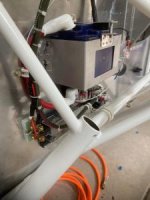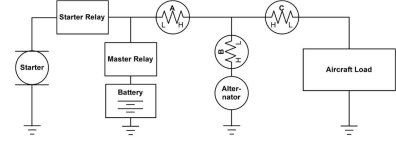Desert Rat
Well Known Member
On the G3X I have my ammeter shunt set up to show the load on the main buss. It appears to be reading the correct number of amps, but it's a negative number. I guess that in a way this makes sense as it's the number of amps the load is sucking up. Nonetheless, it just seems backward to me.
I've already gone into the config menu without finding anything applicable. I also tried swapping the two wires to the shunt, which just resulted in a red X for the ammeter display.
Is there any way to get rid of this minus sign other than just changing the location of the shunt so that it's measuring something else?
I've already gone into the config menu without finding anything applicable. I also tried swapping the two wires to the shunt, which just resulted in a red X for the ammeter display.
Is there any way to get rid of this minus sign other than just changing the location of the shunt so that it's measuring something else?



